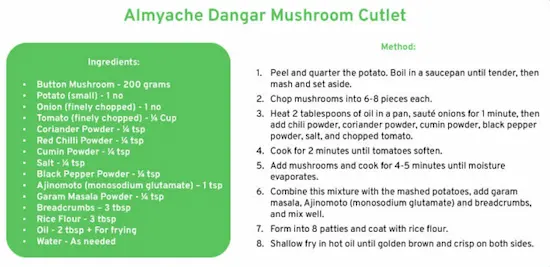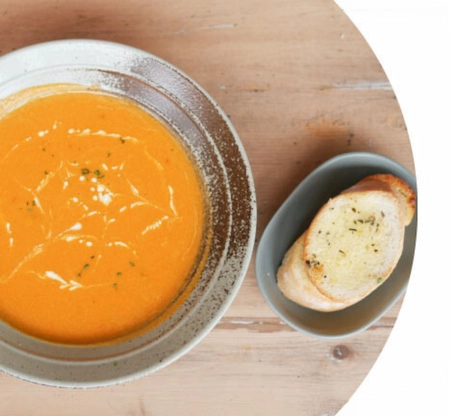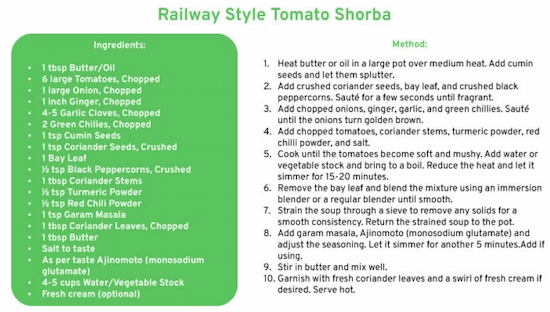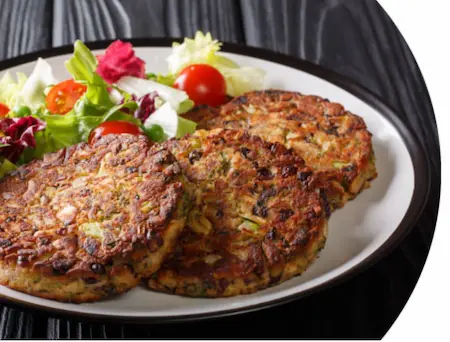World Umami Day: Understanding the Fifth Basic Taste
Think of the tastiest meal you have ever had; a savoury curry of meat or vegetables with hot rice and ghee, or a bowl of warm soup on a cold evening, or even a cheesy pizza topped with fresh mushrooms and a delectable tomato sauce. Can you feel your mouth water as a delicious memory warms your soul? Can you almost smell the aroma and remember the fullness of flavours? The reason is probably umami!
As a chef whose job is to delight people with food and experiment with flavours, I cannot emphasize on the importance of umami more. Distinct from the other four tastes (sweet, salty, sour, and bitter), umami is associated with a distinct savoury and brothy flavour.
July 25th is World Umami Day, marked to celebrate the discovery of the fifth basic taste, umami. In 1908, Japanese chemist Dr. Kikunae Ikeda sought to uncover what made his seaweed broth (dashi) so delicious. He identified that glutamate, a naturally occurring amino acid, gave food this savoury flavour. He called it “umami”, from the Japanese word “umai”, which means delicious. In the early 2000s, Indian-origin biologist Dr. Nirupa Chaudhari discovered the unique taste receptors for umami in our bodies, thus cementing Dr. Ikeda’s findings that umami is a unique taste. As we celebrate World Umami Day, let’s find out more about this fifth taste and why it is so essential to enhance the flavour of food.
Why we like umami
Umami had a place in the culinary world long before cooks and chefs knew what it meant scientifically. Taste plays a crucial role in determining our food choices and overall nutrition. Consider how sugar is an indication of energy or glucose, umami tends to indicate the presence of protein in our food. Many theories propose that since human beings’ early food was meat, insects, and plants – all rich in protein – we have evolved a preference for the umami taste. Glutamate, which is responsible for umami, is present in many common ingredients such as tomatoes, cabbage, potatoes, mushrooms, aged cheese, chicken, soy sauce, etc. Human milk is also rich in glutamate, meaning that our preference for this taste begins early in life.
Umami in diverse cuisines
Umami is a key element in cuisines around the world. Dashi, a broth made from seaweed, is a fundamental source of umami in Japanese cooking. Italian dishes often incorporate parmesan cheese and sun-dried tomatoes to enhance umami flavours. Korean cuisine features fermented foods like kimchi, made with napa cabbage and gochujang and anchovy fish sauce, which are all umami-packed. The Chinese use soy sauce and green onions to add umami to their dishes. In Mediterranean cooking, umami is present in traditional dishes like lamb stew made with anchovies.
In Indian food, too, umami can be ascribed to many dishes. Our stable cabbage sabzis, tomato curries, and beans naturally carry umami. One of the most sought-after desi recipes – butter chicken – made with roasted chicken and a smooth tomato curry, is full of umami. Even the classic Railway-style tomato shorba which is loved across the country, or the Andhra-style chicken Vepudu which packs a punch of flavour – these are quintessentially umami.
How to add umami to your food
There are many ways to add umami to your food, such as by using fermented sauces like soy sauce or Worcestershire sauce, adding aged cheeses like Parmesan and Gouda, or sundried tomatoes and mushrooms, and slow-cooking meat to intensify its flavour.
Dr. Ikeda also discovered a shortcut to add umami to food – by adding Mono Sodium Glutamate, or MSG. He found that the sodium salt of glutamic acid was the simplest way to elicit umami flavour in food.
Contrary to popular belief, MSG is a plant-derived, natural seasoning (made with molasses via fermentation) which is certified safe by food regulators worldwide such as the US Food & Drug Administration (FDA) and the WHO-FAO Joint Executive Committee on Food Additives (JECFA). The glutamate naturally present in food and the glutamate of MSG are identical and treated by the body in the same way.
MSG contains 70% less sodium than table salt. Research has shown that replacing half a teaspoon of table salt with half a teaspoon of MSG can reduce the sodium content in a dish by 37%, without compromising on flavour.
Countries such as Japan and Singapore promote lower-sodium salt alternatives/seasonings like MSG to reduce their population’s dietary sodium. In Japan, research showed that using umami compounds in cooking reduced the average daily salt intake by 22.3%, equivalent to 2.22g of daily salt reduction.
On World Umami Day, I would like to encourage all my readers and food enthusiasts to not shy away from using MSG in food. MSG is simply sodium and glutamate, both of which are found in nature. It is an excellent way to enhance the flavour of food and stabilize the consumption of sodium in your meal.
Here are some of my favourite Indian recipes that are full of umami. This Umami Day do give these a try!
Almyache Dangar Mushroom Cutlet
Ingredients:
- Button Mushroom - 200 grams
- Potato (small) - 1 no
- Onion (finely chopped) - 1 no
- Tomato (finely chopped) - ¼ Cup
- Coriander Powder - ¼ tsp
- Red Chilli Powder - ¼ tsp
- Cumin Powder - ¼ tsp
- Salt - ¼ tsp
- Black Pepper Powder - ¼ tsp
- Ajinomoto (monosodium glutamate) – 1 tsp
- Garam Masala Powder - ¼ tsp
- Breadcrumbs – 3 tbsp
- Rice Flour - 3 tbsp
- Oil - 2 tbsp + For frying
- Water - As needed

Method:
- Peel and quarter the potato. Boil in a saucepan until tender, then mash and set aside.
- Chop mushrooms into 6-8 pieces each.
- Heat 2 tablespoons of oil in a pan, sauté onions for 1 minute, then add chili powder, coriander powder, cumin powder, black pepper powder, salt, and chopped tomato.
- Cook for 2 minutes until tomatoes soften.
- Add mushrooms and cook for 4-5 minutes until moisture evaporates.
- Combine this mixture with the mashed potatoes, add garam masala, Ajinomoto (monosodium glutamate) and breadcrumbs, and mix well.
- Form into 8 patties and coat with rice flour.
- Shallow fry in hot oil until golden brown and crisp on both sides.
Railway Style Tomato Shorba

Ingredients:
- 1 tbsp Butter/Oil
- 6 large Tomatoes, Chopped
- 1 large Onion, Chopped
- 1 inch Ginger, Chopped
- 4-5 Garlic Cloves, Chopped
- 2 Green Chilies, Chopped
- 1 tsp Cumin Seeds
- 1 tsp Coriander Seeds, Crushed
- 1 Bay Leaf
- ½ tsp Black Peppercorns, Crushed
- 1 tbsp Coriander Stems
- ½ tsp Turmeric Powder
- ½ tsp Red Chili Powder
- 1 tsp Garam Masala
- 1 tbsp Coriander Leaves, Chopped
- 1 tbsp Butter
- Salt to taste
- As per taste Ajinomoto (monosodium glutamate)
- 4-5 cups Water/Vegetable Stock
- Fresh cream (optional)

Method:
- Heat butter or oil in a large pot over medium heat. Add cumin seeds and let them splutter.
- Add crushed coriander seeds, bay leaf, and crushed black peppercorns. Sauté for a few seconds until fragrant.
- Add chopped onions, ginger, garlic, and green chillies. Sauté until the onions turn golden brown.
- Add chopped tomatoes, coriander stems, turmeric powder, red chilli powder, and salt.
- Cook until the tomatoes become soft and mushy. Add water or vegetable stock and bring to a boil. Reduce the heat and let it simmer for 15-20 minutes.
- Remove the bay leaf and blend the mixture using an immersion blender or a regular blender until smooth.
- Strain the soup through a sieve to remove any solids for a smooth consistency. Return the strained soup to the pot.
- Add garam masala, Ajinomoto (monosodium glutamate) and adjust the seasoning. Let it simmer for another 5 minutes. Add if using.
- Stir in butter and mix well.
- Garnish with fresh coriander leaves and a swirl of fresh cream if desired. Serve hot.


